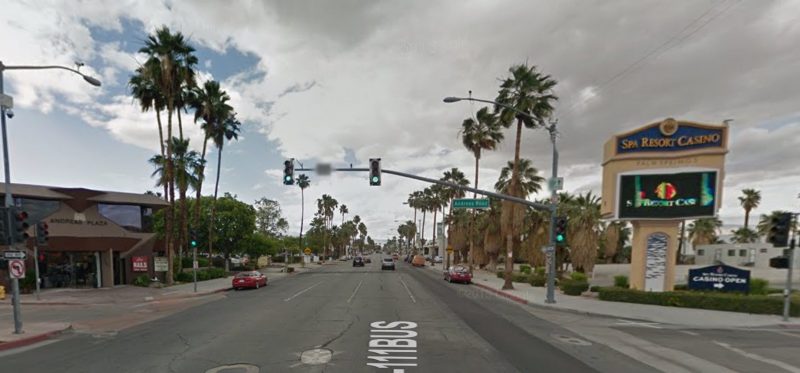
Palm Springs, a city already full of slow moving snowbirds and tourists, is considering a move to change the configuration of Indian Canyon Drive by either eliminating lanes for parking spots or turning it into a two-way street. While many have pointed out that this would be a less-than-ideal thing, including this very website, the city is still considering it because Palm Springs is, well, Palm Springs. Remarkably, the city is still considering it even after a study concluded that a turtle, molasses, or snails will end up moving at a faster speed on the road than your car.
Via Desert Sun:
A study showed people move an average of 22 mph during the busiest periods. That would lower to about 17 mph if the road conversation takes place, Assistant City Manager Marcus Fuller said during Wednesday’s City Council meeting.
Considering the speed limit is 30 mph, a 5 mph difference is notable.
How wonderful. Oh, and the city would need to spend about $2 million to make it happen, according to the newspaper.
At this rate, the city should just turn the whole thing into a sidewalk – as it looks like you would be better off just abandoning your car and walking.
Image: Google Maps

There’s hardly a better way to make a streetscape more attractive to retail and commercial establishments than to slow cars down and make the street more conducive to multi-modal transportation. (eg: bikes and pedestrians) Converting Indian Canyon to a 2-way street and adding traffic-calming devices will provide opportunities for retailers to be more successful on that stretch. It’s a complex issue, for sure, and there are arguments to be made on both sides. However, if one considers a road to be anything more than a way to move cars—a place to walk a dog, ride a bike, own a restaurant, gather or provide connectivity for people—then the arguments to slow traffic and support human activity that’s not car-related start to carry a lot of weight.
There’s also an argument that slowing traffic to a degree also lets more cars move through an area per hour, as cars which are more slow-moving can follow each other more closely. I’m sure there’s a speed at which the car count is optimized.